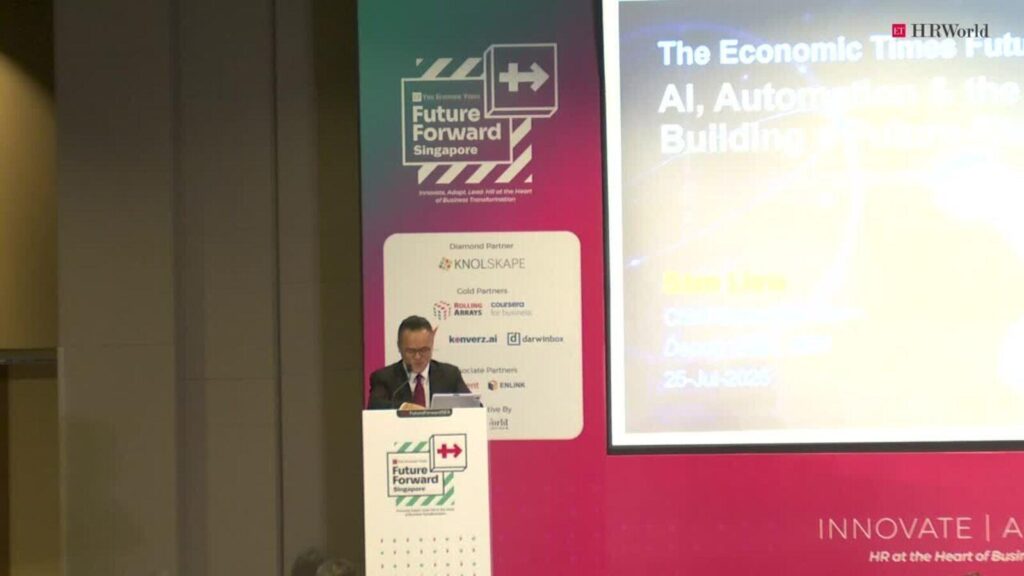As businesses continue to adapt to the rapid advancements in technology, the conversation around artificial intelligence and automation has gained significant traction. The recent keynote by Sam Liew at the Economic Times Future Forward Southeast Asia Summit highlighted the importance of integrating these technologies in a manner that enhances the human aspects of work. For small and medium-sized businesses (SMBs), navigating this transition is not merely an option but a necessity to remain competitive in a fast-evolving landscape.
Implementing automation within an SMB requires a systematic approach to streamline workflows and enhance overall performance. The first step is to identify repetitive tasks that consume time and resources. Tasks such as data entry, invoicing, and email correspondence are prime candidates for automation. By assessing these tasks, leaders can determine specific areas where automation can deliver the most immediate benefits.
Next, selecting the right automation tools is crucial. Platforms like Make and Zapier have become invaluable in the SMB toolkit due to their user-friendly interfaces and flexibility. These tools allow businesses to integrate various applications, allowing for seamless workflows. For instance, if a business utilizes a CRM to manage customer interactions and an email service for communication, tools like these can automate the transfer of information between the two, minimizing human error and reducing the time spent on manual data entry.
Once the appropriate tools are selected, it is essential to create a clear plan for implementation. Begin by mapping out the workflow you wish to automate. This step involves outlining the current process and identifying where the automated actions will fit. For example, if automating a lead capture process from a website into a CRM, define how data will move between applications, what triggers the action, and how you will handle exceptions.
Following this, establish metrics to evaluate the success of the automation process. What are the KPIs that will indicate success? Common metrics may include time savings, error rates, or even customer satisfaction scores. By quantifying the expected outcomes, you set the groundwork for evaluating return on investment (ROI) later on.
In practical terms, creating an automation scenario in Zapier starts by choosing a trigger event, such as receiving a new email or generating an invoice. After selecting the trigger, users specify the subsequent action—like creating a task in a project management tool or sending a follow-up email. This intuitive process serves to illustrate how easily an SMB can begin automating their workflows.
However, while there are considerable opportunities presented by automation, SMB leaders must also be cautious regarding potential risks. Data security should be a primary concern, particularly when automating processes that involve sensitive information. Before implementing any automation, ensure that the selected tools comply with data protection regulations. It’s also essential to set up appropriate access controls to mitigate risks associated with external integrations.
Additionally, the transition to automation must include training for your employees. They need to understand not only how to use the new tools but also how these tools will enhance their roles, rather than replace them. This is where the human touch, as emphasized in Liew’s keynote, comes into play. Engaging employees in this transformation fosters a culture of continuous learning and adaptation, thereby ensuring a smoother transition.
As organizations increasingly integrate automation, it is worth taking the time to assess potential areas for further optimization. For instance, after the initial rounds of automation implementation, you may find new bottlenecks emerging in processes that were previously efficient. Regular reviews of automated workflows enable organizations to adapt to new challenges and continue enhancing operational efficiency.
The investment in automation can yield significant returns when approached strategically. Leaders must be prepared to iterate on their processes continually, refining them as various technologies evolve and as employee competencies improve. The convergence of technology and human expertise presents a formidable force for SMBs willing to embrace this change. The organizations that succeed will not only harness the power of technology but also the innovation potential of their people.
In concluding, the road to becoming a future-ready workforce necessitates both technological integration and a steadfast commitment to nurturing human talent. The insights gained from industry leaders like Sam Liew highlight the necessity of maintaining a balance between automation and the human touch, paving the way for SMBs to thrive in an increasingly automated world.
FlowMind AI Insight: The effective integration of AI and automation in SMBs is not just a technological upgrade; it is a profound cultural shift that demands strategic planning, continuous learning, and long-term commitment to enhance human strengths alongside technological capabilities. Embracing this dual approach will better position organizations to navigate the challenges and opportunities of the future workforce.
Original article: Read here
2025-08-27 08:17:00

